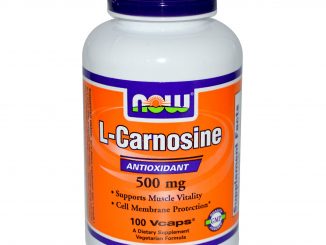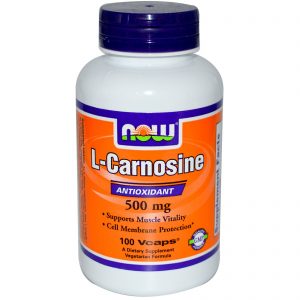The properties of Carnosine
Carnosine (beta-alanyl-L-histidine) is a dipeptide molecule, made up of the amino acids beta-alanine and histidine. It is highly concentrated in muscle and brain tissues.
Carnosine acts as an antiglycating agent, reducing the rate of formation of advanced glycation end-products (substances that can be a factor in the development or worsening of many degenerative diseases, such as diabetes, atherosclerosis, chronic kidney failure, and Alzheimer’s disease), and ultimately reducing development of atherosclerotic plaque build-up. Chronic glycolysis is speculated to accelerate aging, making carnosine a candidate for therapeutic potential.



























































